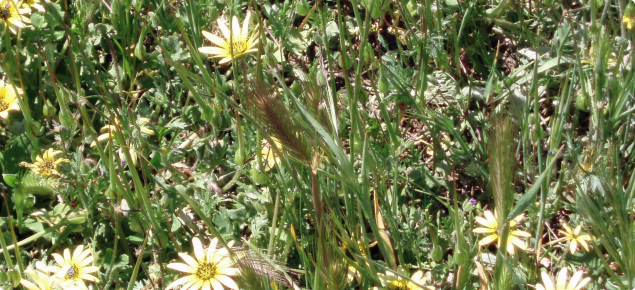How will spray-topping affect the pasture legume?
- Glyphosate is very damaging to pasture legume seedset especially when applied early to mid-flowering.
- Delaying spray-topping will improve legume seedset.
- Spray-topping with glyphosate has been shown to reduce initial levels of hardseededness and increase the rate of hardseed breakdown in subclovers and medics. Paraquat appears to have little impact on hardseededness.
- For most pasture legumes (except Cadiz serradella), a late spray-top application will be less damaging. Cadiz will often abort flowers when spray-topped with paraquat, so an earlier timing for Cadiz is better. If flowers are aborted then the plants have to re-flower and set seed again, a process that can take three weeks. This can be very damaging in years with a dry finish.
- Even if spray-topping with glyphosate is delayed, it can be a useful treatment due to the impact on weed seed attributes such as dormancy and fitness.
- Paraquat enables spray-topping to be delayed as it can be applied at a later (grass) phenological stage and still prevent grass seed set, while allowing longer for the legumes to set seed.
Experience with subclover is not directly transferable to new annual legume species
- Trials indicate that spray-topping with paraquat results in significant seedset reduction of prima gland clover, frontier balansa clover, orion sphere medic and eastern star clover. Paraquat was very damaging to prima gland clover and eastern star clover. These species were well advanced into flowering at the time of spraying and the reduction in seed set was 60–75% for both and consistent between the two sites.
- Try to avoid treatment during the early period of legume seed development, that is, when the seed is still soft. Waiting until the seed is firm (firm dough stage), although it can still be green, will result in less damage. This timing will be about 5–7 weeks after first flowering for species with medium-sized seeds like medics, subclovers and serradella. Test this by pulling the burr or pod apart with your fingernails and feel the firmness of the seed between your fingers.
- It is important to note that seed viability is achieved at about 45–50% of maximum seed weight (in normal growing conditions). If seed development is stopped at this time, the resulting seeds will be smaller with implications for seedling vigour.


